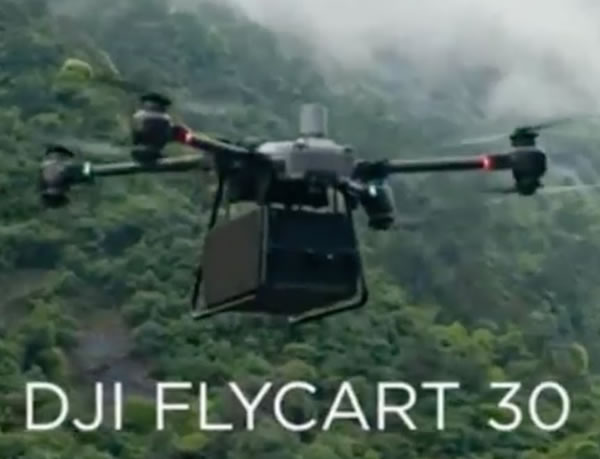DJI has officially launched its highly anticipated FlyCart 30 delivery UAV on an international scale. This release signifies the company’s substantial foray into the burgeoning realm of drone-assisted deliveries, a sector rapidly gaining traction in the United States and poised for exponential growth worldwide.
The FlyCart 30 is Engineered with a coaxial four-axis, eight-blade, multi-rotor configuration and equipped with carbon fibre propellers with a maximum flight speed of 20 meters per second. The craft offers operational flexibility by allowing the use of either a single or double battery setup, impacting payload capacity and flight duration inversely. In its typical dual-battery configuration, the FlyCart 30 demonstrates an impressive capability to transport loads of up to 30 kilograms across distances spanning 16 kilometres. In a single-battery emergency setup, it can carry a maximum payload of 40 kilograms over a shorter distance of 8 kilometres.
The FlyCart 30’s durability and resilience in adverse weather conditions are notable features. Possessing an IP55 protection rating, this drone can operate within temperatures ranging from -20°C to 45°C (-4°F to 122°F) and withstand winds of up to 12 meters per second. DJI shared in its announcement the drone’s ability to overcome conventional transportation challenges, enabling efficient and flexible deliveries for various scenarios, including mountain transportation, offshore logistics, and emergency rescue missions.
Notably, DJI addresses concerns regarding data security, particularly in light of recent allegations of potential data leaks from DJI drones. The company explicitly assures operators about the security measures embedded in both the FlyCart 30 and the DeliveryHub system, emphasizing the integrity of data management processes across various stages.
With its cutting-edge capabilities and a strong focus on security, DJI’s FlyCart 30 marks a significant leap forward in the realm of drone-powered deliveries, promising enhanced efficiency and adaptability in diverse transportation scenarios.


